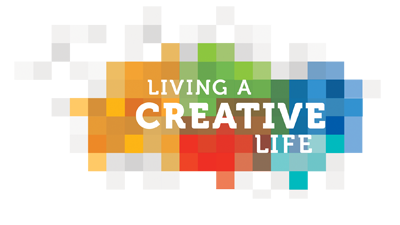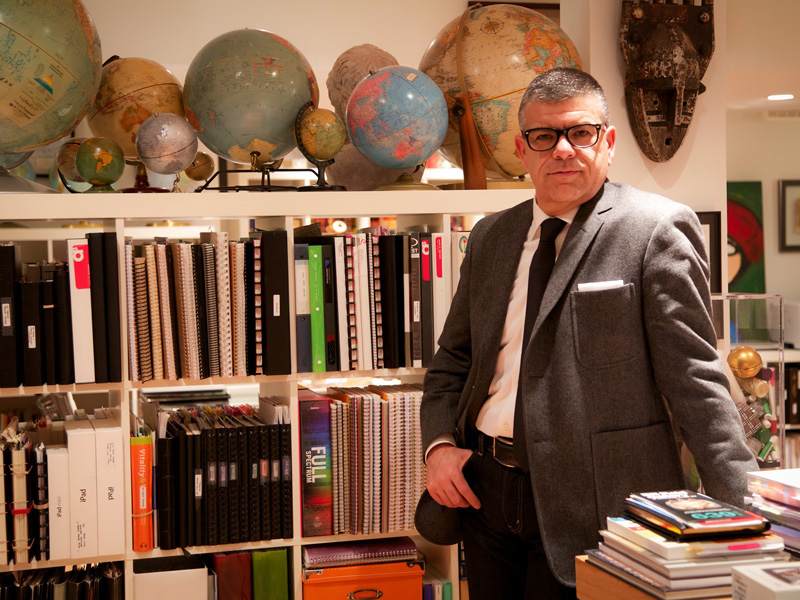Andre Mamprin
Leadership key to a creative (organizational) life
Can organizations live a creative life, the same way people do?
Andre Mamprin thinks so.
He’s one of the co-founders of The Next Institute, which has worked with over 40 firms in the past decade, helping organizations and companies thrive by identifying their innovation leaders. (Or, as Mamprin’s Twitter profile describes him, in addition to being a leader in knowledge architecture at The Next Institute, he’s also a designer, explorer, ecologist, developer and alchemist.)
There are patterns of organizational behavior that separate the also-rans from the contenders, Mamprin says.
To borrow from the sports world, your organization might become the Maple Leafs—perpetual cellar dwellers—or it might become the Red Wings, a team that has made the playoffs 25 years in a row, winning three Stanley Cups over the same period of time Toronto has won none.
What gives an organization the courage to live a creative (organizational) life?
In a word, leadership, Mamprin says.
“When you get to the top of the pyramid,” Mamprim says, “organizations that lead their field do some things really well. They’re able to navigate complexity.
“Just take [as] an example,” he says, “an all star athlete like [Pittsburgh Penguins superstar] Sidney Crosby. A guy like him can actually slow down the playing field and focus on the most important things. This skill allows you to work on what will create the most value for your enterprise, so there’s other competencies, like patterning, catalyzing, and emerging—holding the space for something [new] to emerge.”
Sort of like a hockey team debating the conventional hockey wisdom of whether or not a young prospect named Goudreau is too short to play in the pros, or a theatre company debating whether or not to bring its storytelling into the 21st century by using digital projections instead of building a dozen sets out of styrofoam.
“When you’re doing this stuff [as an organization],” Mamprin continues, “you’re going to be able to author your own story—you’re more adaptive. If you can’t do that, you’re more reactive—and somebody else is going to author your story for you.”
It’s no quick fix, either. Mamprin and B.C.-based partner and co-founder Ross Gilchrist spend a long time with each client—24 months, on average.
“We’re heavily involved with these organizations,” he says. “We don’t just do one-offs. We’re part of their world, so we get to know them really well.”
Mamprin believes creativity can solve some of the world’s biggest problems | Video: Jordan A. Boyd Consulting, courtesy of Q3
The unanswered part of the analogy, is how do you measure the sorts of intangibles Mamprin cites as being intrinsic to strong, dynamic leaders?
After all, if there was a spreadsheet that could measure intangibles, they would no longer be intangibles.
Part of The Next Institute’s process involves working with jazz musicians and improvisational actors, and an array of artists who naturally demonstrate the capacity for adaptive behaviour.
“The most effective Leaders have presence,” Mamprin says. “They can influence you to buy into their vision. They are conceptually creative, analytical, bring a new idea in—test the waters back and forth. Improv theatre [actors or jazz musicians] have to figure it out on the fly.”
Any consultant who advocates for a belief system tries to practice it their own life, and one look around Mamprin’s home office reveals an appetite for creativity.
His workspace showcases an enviable collection of globes Mamprin has collected in his travels, a row of clocks representing the time zones he works in, a large collection of books line the walls , all of it surrounded by a number of oil paintings, many of them done by Mamprin himself.
“I try to be creative,” he says. “I paint, I sculpt, I write… and a lot of this is helping me to make sense of organizational enterprise life—so I’ll have a felt experience on something. Over time, I am better able to articulate it by first sculpting it, then writing about it. It then becomes highly evident to me.
“That’s one way creativity informs my work.”
All of which begs the question: If it’s possible for organizations to live and work creatively, is it possible for a city such as Calgary to do the same?
That makes Mamprin, a lifelong Calgarian, stop and think.
“We start with some foundational stuff in Calgary,” he says, “that other cities don’t have. Calgary’s an incredibly enterprising city and it’s [also incredibly] entrepreneurial.
“The question I would be asking,” he continues, “is, how do we leverage the talent? How do we develop more of that skill? That attribute—we’re talking about alchemy now. Energy and entrepreneurial spirit I think is a good foundation piece. Then you add to that generosity. Calgarians are generous—with time and money.”
After a bit of ruminating, Mamprin arrives at a suggestion, kind of like a chef asked to whip up something delicious with available ingredients.
“Do we need to create a Centre for Entrepreneurial Leadership here in Calgary?” he asks. “Is that something we can own? Do we need to look at the education system in Alberta, which happens to be one of the best in the world, actually.”
It turns out that Mamprin isn’t just blowing civic booster smoke with that last statement. One of his clients is the Association of Superintendents and Curriculum Designers9 (ASCD) in the Washington D.C., which is responsible for creating the public school curriculum throughout that country.
There, Mamprim met Pasi Sahlberg, a Finnish educator—the Finns are the educators of the global moment—where he discovered that Alberta is widely and highly regarded for its education system around the planet.
“Pasi basically said that Alberta’s education system,” he says, “unbeknownst to me—but he said, you guys are doing a lot of stuff right.
“The question then becomes,” he says, “how do I bridge arts and business and learning and all of this—so all of this kind of entrepreneurial spirit and energy, education, generosity, creativity and the arts. And if I add one more, which is business—within this alchemy—I think—the answer.
“That would be my offer,” he says. “I don’t know what the end product is, but it would be something dynamic and unique to Calgary that is like this place.”
About The Storytelling Project
 On November 16, 2015, Calgary Arts Development hosted a working session with approximately 30 creative Calgarians from various walks of life. Many of the small working groups voiced the need to gather and share more stories of people living creative lives.
On November 16, 2015, Calgary Arts Development hosted a working session with approximately 30 creative Calgarians from various walks of life. Many of the small working groups voiced the need to gather and share more stories of people living creative lives.
That need has turned into The Storytelling Project.
The Storytelling Project raises awareness about Calgarians who, by living creative lives, are making Calgary a better city, effecting positive change and enriching others’ lives.
Have a story to share? Email us at news@calgaryartsdevelopment.com.
